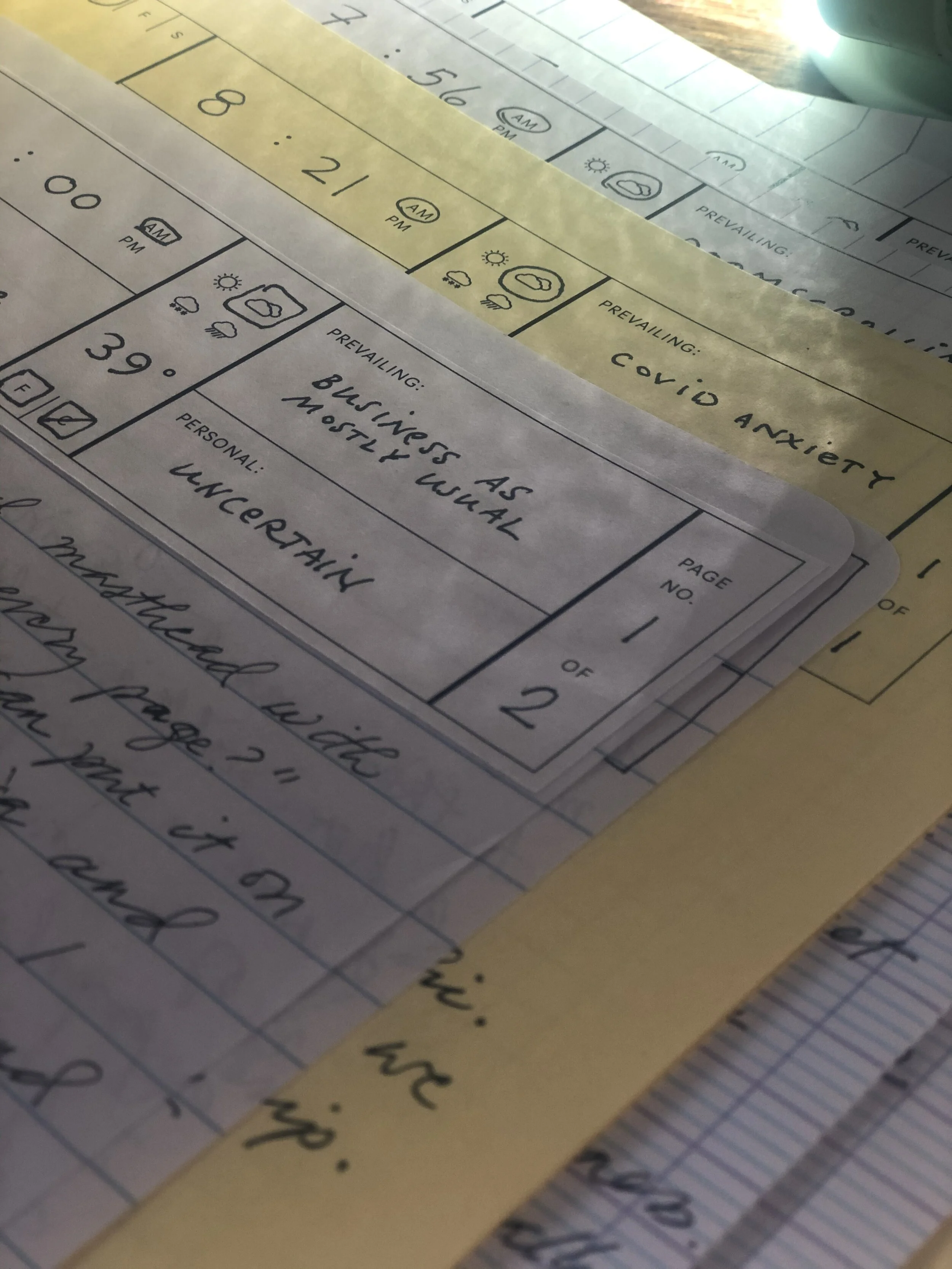Writing tools & practices (part 1)
I have used—and continue to use—a wide variety of journaling tools and techniques. I often crave the tactile experience of ink on paper, but I’ll use whatever is readily available—including my phone! I take more of a “yes, and” approach rather than “either/or”. Here are some tools and techniques I’ve experimented with over the years. Maybe one or two will prompt you to pick back up!
Tool #1 • paper-based
Tiny Notebooks
When recommitting to journaling as a young adult, I was mired in trepidation (and insecurity). I had the impulse to write but needed something I could access—and hide—quickly! These palm-sized notebooks worked perfectly. I filled about 25 of them before having the confidence to move on to larger formats.
Tool #2 • paper-based
Sealed Morning Pages
In my late 20’s, I took an Artist’s Way workshop. One of Julia Cameron’s central exercises is what she calls morning pages. The idea is to complete three pages of long-hand stream-of-consciousness writing first thing in the morning to clear your mind of the gunk. Morning pages can be messy, ugly, repetitive—it doesn’t matter. The idea is just to keep moving, get thoughts out of your head and onto the page so you can go on to create what matters.
One of the suggestions with morning pages is not to read back on them. At least not for a while. I wasn’t so sure I’d follow through on that recommendation so I decided to write out my pages and seal each of them in an envelope! Something about “locking” the writing away, even temporarily, turned out to be immensely liberating. These are some of my absolute favorite pieces to harvest.
Tool #3 • paper-based
Masthead Labels
I recently designed a masthead in order to have additional context for each writing entry. I love my date stamp but the date only tells so much. Where was I? What was the weather like? What else was happening around me?
In another post I share more details and a link to a PDF download.
Tool #4 • electronic (Evernote)
Daily Details
When Covid pulled the plug on life as we knew it, the simplified routines meant more creative time for some. While I did have (a bit) more time, I had very little emotional bandwidth to put toward personal creative projects. Fear occupied center stage! More truthfully, any creative energy I did have was spent on keeping my design business going!
One modest practice I did begin was something I called “daily details”. The practice was simply noticing and noting the things that caught my attention: bits of dialogue, sights, sounds, tastes and textures. Listing out concrete details in the here-and-now helped pull me down out of the swirling anxieties and anchor in the present.
Because this was something I could do on my phone, I often tapped out these tidbits on the spot—in the middle of a forest path, in line at Costco, or at my desk in a lull between Zoom calls.
It didn’t take long before I realized these, too, were a kind of journaling practice, with their own interesting record of places and events.
I use Evernote to capture my details but you could certainly use other tools. The more convenient, the better! Give it a try!





